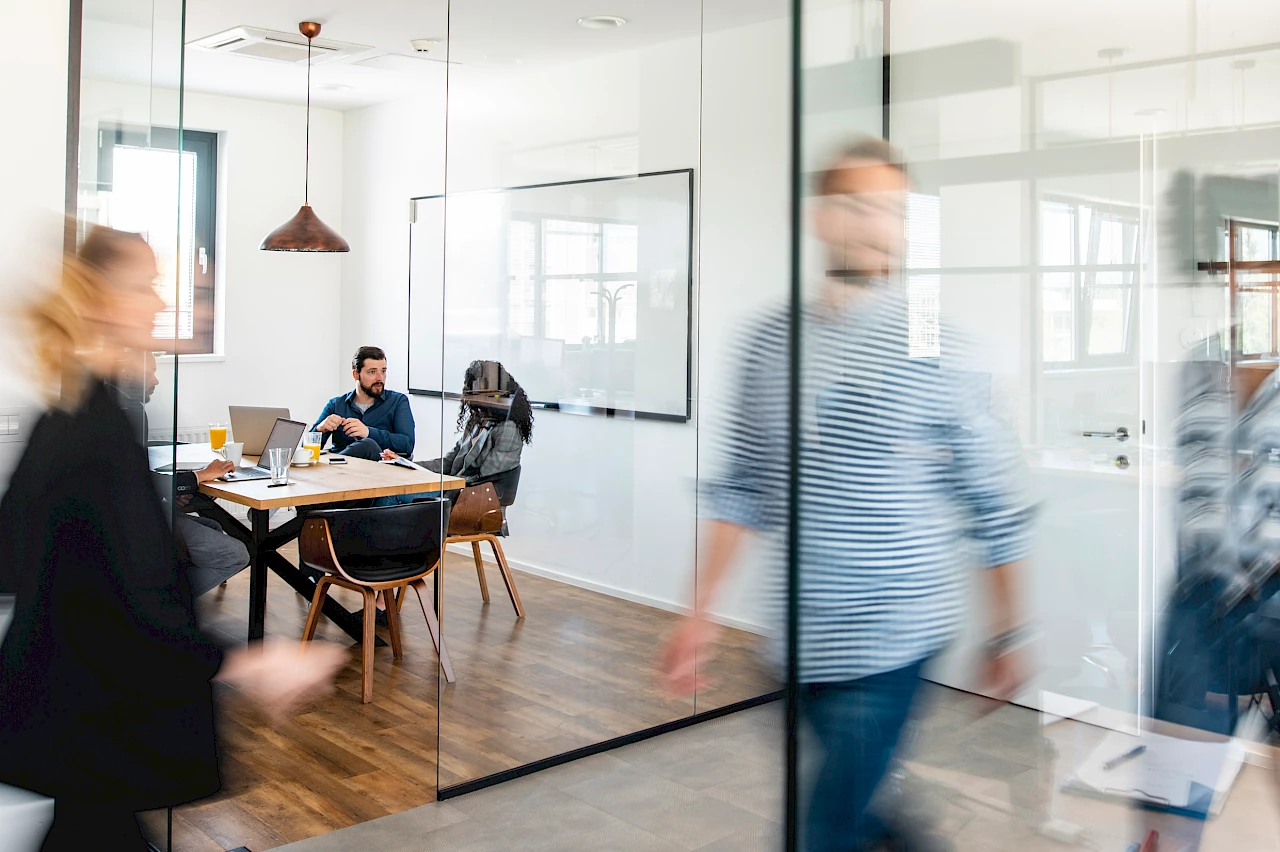The perfect workspace can be located anywhere. People who want to work flexibly no longer need to limit their options to an office, their home or a co-working space. If their tasks permit, they can also do their work while on the move or at another location of their choice.
Even a library or a community centre can be the perfect place to work efficiently. Thanks to ongoing digitalisation, “homes away from home”, or “great good places”, can be used for individual activities just as well as the office, or even better, for doing their work. The theory of “third places” — places where people like to spend time and also work — goes back to the US social economist Ray Oldenburg and his book “The great good place”, which was published in the 1970s. Today this model has been expanded. People now talk about five, rather than three, habitats that can also be used for working.

Today work is no longer a place — it’s a result
In his theory, Oldenburg categorised habitats according to their places. A person’s home, and thus his or her home office, is the 1st place. The company office is the 2nd place. The concept of a 3rd place is usually applied to co-working spaces, community hubs and similar locations where people meet in order to work away from the company office. The transformation of the world of work has focused a spotlight on other places that can expand Oldenburg’s model in the future. For example, the 4th place is the transition time between a person’s home and the office or the next appointment. And 5th places are all the other habitats where people like to spend time and where they can also do part of their work. In the future, work will be done not only in the traditional office but independently of preset locations — that is, in these five alternative places of work. Several model projects dealing with this issue are currently running in Germany. One of them is the spaces4future project in Braunschweig, which is working on concepts of new places for communal living — very much in tune with Ray Oldenburg’s ideas.
The office is becoming a hub
Bernd Fels, a leading developer of the concept of diverse places of work, is a co-founder of spaces4future and other initiatives. He presents the thesis that in the future we will work even more decentrally. To this end, Fels combines the ideas of Oldenburg with the New Work philosophy of Frietjof Bergmann. As a result, he believes that the flexibility of times and places will become more important.
However, the office will not become obsolete. It will continue to be the place that connects people and enables them to share ideas. People doing project work and pioneering work will continue to need social interaction, networking and direct meetings with their colleagues. In the future, organisations will function according to the “hub and spokes” principle, which says that company headquarters are important for connecting employees and building a brand, but the “spokes” are the places of work where the work outcomes “happen“.




